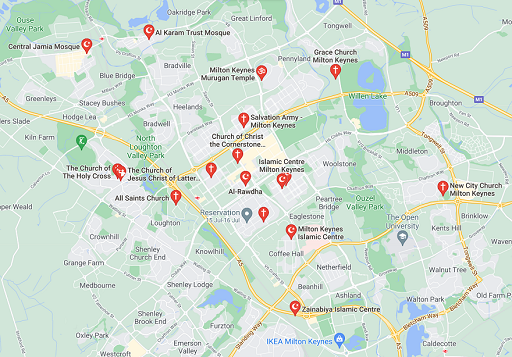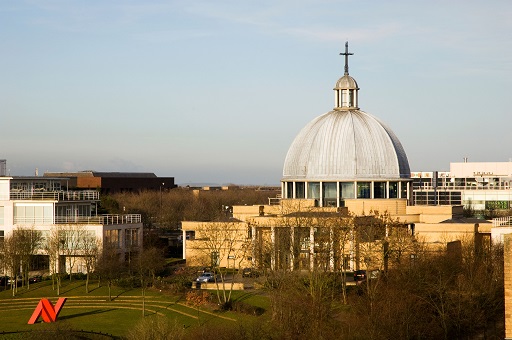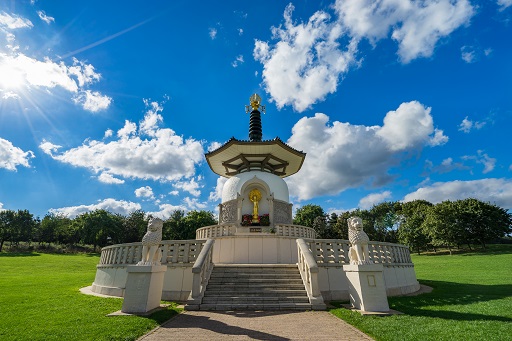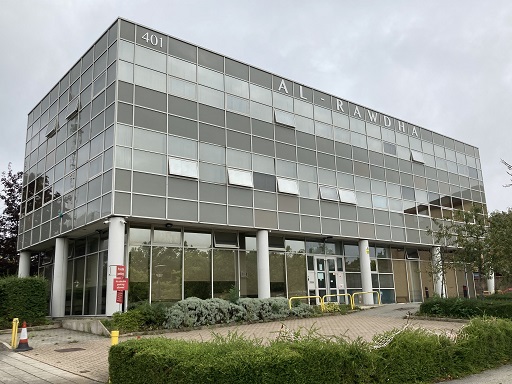3 A closer look at Milton Keynes and its religious diversity
The new town of Milton Keynes was established in 1967 and brought together the existing smaller towns (Bletchley, Fenny Stratford, Wolverton and Stony Stratford) and villages in the area. The town incorporated more traditional elements as well as new urban design. For example, it was organised around a grid of roads that would allow for the flow of traffic, yet town planners rejected the tower blocks that had become the most visible structures in modern cities, instead setting a height limit for buildings both inside and outside the town centre. Milton Keynes has plenty of wild areas, grasslands, forests, lakes and an impressive river, the River Great Ouse, which forms its Northern border – although as a large urban jungle, Milton Keynes’ biodiversity is reduced and further under threat due to the present ecological and climate crisis. In terms of its socio-economic profile, Milton Keynes was depicted by a 2016 community report as a ‘tale of two cities’ – this is because the town showed one of the starkest contrasts between affluent and deprived communities in the UK (Milton Keynes Community Foundation, 2016).
As a town established in the 1960s, Milton Keynes reflects wider trends of religious diversity in the UK; the town has eight Islamic mosques, three Hindu temples, one Sikh Gurdwara and a Buddhist Centre, alongside its twenty or so Christian churches.
The diversity of church traditions reflects the internal diversity of Christianity; however, this also indicates something of the ethnic transformation of British Christianity since the 1950s through migration. There are, for example, various congregations which might be designated ‘black majority’ churches.
It was particularly after the 1960s that South Asians from India, Pakistan, Bangladesh and Sri Lanka began to arrive in significant numbers in the UK, as well as Europe and the US. By the 1990s there were hundreds of Hindu, Sikh and Buddhist temples in the UK, as well as Islamic mosques. Many South Asian immigrants understood the West to be secular. They often guarded against aspects of Western culture or, in some cases, tried to attract new converts. In this context immigration to the UK gave rise to the growth of diaspora religions, which are understood as ‘groups that have a sense of being a minority, sometimes an oppressed minority, living in an alien culture at a distance from the old country’ (Hinnells, 1996, p.11).
Around this time in the 1960s and 70s, many other traditions started to become established in Britain, often with direct links to immigrant communities from South Asia and Commonwealth countries, or influenced by Eastern beliefs and practices, such as yoga, meditation, reincarnation or karma. The New Age movement, which also experienced a rapid growth around this time, abounds in Eastern beliefs and practices, as well as eclectic influences from a great variety of ideas from around the world (for example, belief in ‘ley lines’ as some sort of spiritually charged network of arteries across the Earth, believed to have been recognised by ancient and pre-modern people as links between important constructions, from ancient megalith structures to medieval cathedrals). It is no wonder that, being planned in the late 1960s, Milton Keynes shows this New Age influence too, as the town grid was designed so that, at sunrise on the day of the Solstice, the sun is directly aligned with the main boulevard in Milton Keynes: Midsummer Boulevard!
Religious diversity has many distinct aspects; not only are there many religious traditions that have arrived in Britain through increased immigration, but there's also been cross-fertilisation among religious traditions through living in close proximity with each other, often in newly established cosmopolitan urban areas, like Milton Keynes. Today, contemporary spirituality and a great diversity of newer religious traditions show some of the influences of the changes seen since the 1960s. The next activity is designed to help you reflect on this great contemporary diversity of religious identities, and the complexity of an individual’s religiosity or non-religiosity.




